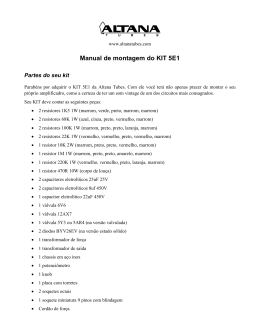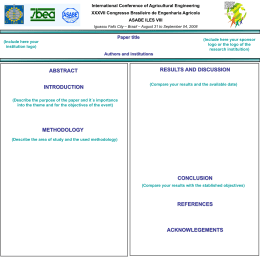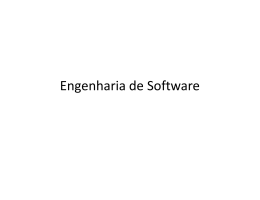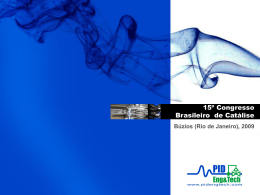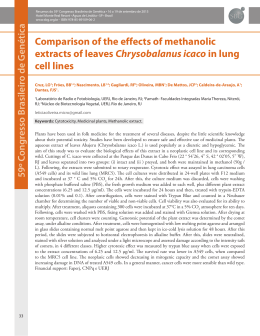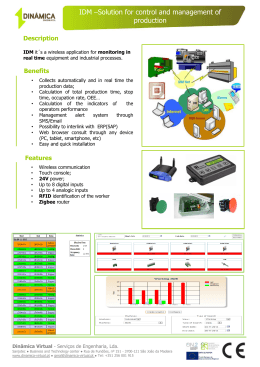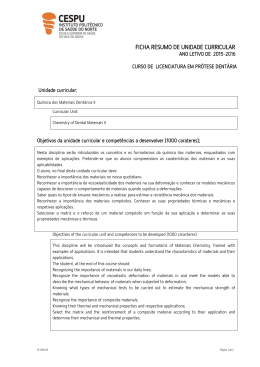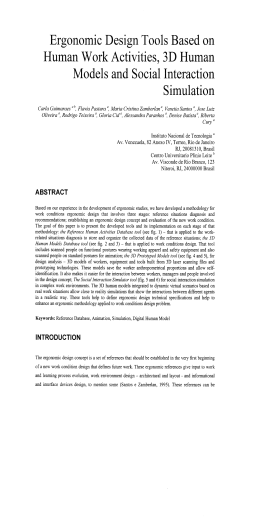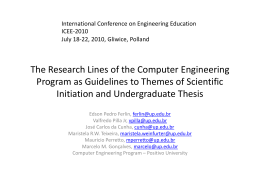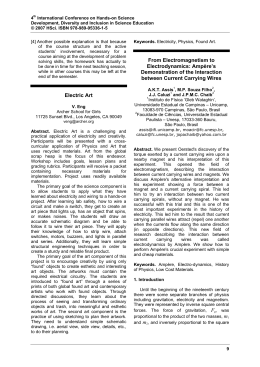SPECIAL PARAMETERS FOR NiTi SHAPE MEMORY ALLOYS WIRE DRAWING PROCESS Leonardo K. Kabayama, William M. M. Menezes, Odair D. Rigo, Jorge Otubo [email protected] – Praça Marechal Eduardo Gomes, 50 – Vila das Acácias – São José dos Campos – São Paulo – CEP 12228-900 – Tel: 12 3947-590 Instituto Tecnológico de Aeronáutica – ITA ABSTRACT The wire drawing process of NiTi shape memory requires a combination of special parameters to obtain a production of wires with good surface finishing. These kind of wires are largely used in aerospace, robotics and biomedical applications. This work presents the development of the special parameters, which includes reduction schedule, intermediary annealing temperature and surface treatment, in the wire drawing process of NiTi shape memory alloys. 1 – INTRODUCTION NiTi shape memory alloy (SMA) have been used in several applications in aerospace, automobilist and medical areas, because its functional and mechanical properties are superior that the properties shown by other shape memory alloys(1). Among these various applications, NiTi SMA has been used in rod or wire form for thin tubes, springs and non regular forms(2). In wire form, NiTi alloys with shape memory effect or superelasticity are used in thermostatic valves actuator spring, endodontic instruments, orthodontics arc wires, cellular phone antenna and eyeglass frames, as shown in figure 1. 18º CBECiMat - Congresso Brasileiro de Engenharia e Ciência dos Materiais, 24 a 28 de Novembro de 2008, Porto de Galinhas, PE, Brasil. 8810 Figure 1 – NiTi superelastic wire applications(3). Wire drawing is the cold plastic forming process that produces rod, wires or tubes with several geometries, but the application of this metal forming process in NiTi SMAs requires special processing parameters(4) that involves heat and surface treatments, and the basic wire drawing parameters like area reduction, process speed and die geometry. NiTi alloys can achieve 30 to 50% area reduction(5), but in cold metal forming this material presents severe work hardening, reducing its formability, principally in wiredrawing; therefore, heat treatment of annealing is required to improve the formability of NiTi alloys(2). These inter-annealing presents a lost in area reduction of drawn wires after the heat treatments due to its shape memory effect. The mean problem in NiTi SMA wire drawing is the non lubricity of the lubricant inner wire drawing die. This lubrication failure causes wire galling. Galling is concerned with removal of material from wire and this removed material welds itself to the surface of the die(6). This material welded in the die surface may cause scratches or grooves in wire surface, variations in wire diameter or wire rupture inner the die. To improve the lubricity or lubricant adhesion on wire surface, a suitable surface treatment is required with a heat treatment in non controlled atmosphere that produce a thin oxide layer in wire surface. This oxide layer promote lubricant adhesion in wire surface improving lubricant carrying to inner of the wire drawing die and reducing the friction between wire and die surfaces(7). This works presents the special parameters required in wire drawing process of NiTi shape memory alloys. This special parameter is necessary to produce thin wires with better surface quality. 2 – MATERIALS AND METHODS 18º CBECiMat - Congresso Brasileiro de Engenharia e Ciência dos Materiais, 24 a 28 de Novembro de 2008, Porto de Galinhas, PE, Brasil. 8811 A vacuum induction melting (VIM) process is used to produce the NiTi alloy with the chemical composition showed in table 1, which was used in this work. Table 1 – Chemical composition of the analyzed NiTi alloy. Ni (%wt) Ni (%at) Ti(%at) C (%wt) O (%wt) 55,21 49,94 50,06 0,110 0,0390 These VIM NiTi alloy ingot was primary hot rolled and hot and cold swaged to adequate its dimension to a proper dimension used in wire drawing. The ingot dimension was reduced to a rod with 2,22mm in diameter and from this diameter a wire drawing process was realized in a single pass wire drawing machine shown in figure 2. Figure 2 – Single pass wire drawing machine. In the wire drawing process a set (figure 3) of tungsten carbide wire drawing dies was used. The die geometries referred to 15% area reduction in each pass are shown in table 3. As lubricant to prevent contact of inner die surface and wire surface a MoS2 grease was used, in a system that simulate a pressure die. 18º CBECiMat - Congresso Brasileiro de Engenharia e Ciência dos Materiais, 24 a 28 de Novembro de 2008, Porto de Galinhas, PE, Brasil. 8812 Figure 3 – Tungsten carbide wire drawing die set. Table 3 – Wire drawing die geometries. Diameter Reduction (D) Angle (2α) [mm] [°] Bearing Length (Lp) Acumulated Area Reductions [%] Lp/D [%] Lp [mm] 01 2,1742 0,6523 2,33 02 2,0045 0,6014 16,98 03 1,8480 0,5544 29,44 04 1,7038 0,5111 40,02 05 1,5708 0,4712 49,02 06 1,4482 0,4345 56,66 07 1,3352 0,4006 63,16 08 1,2310 0,3693 68,69 09 1,1349 0,3405 73,38 10 1,0463 0,3139 77,38 11 0,9647 0,2894 80,77 15 30 A successful NiTi SMA wire drawing requires special process parameters that will be discussed in this work. First is necessary to ensure that the NiTi rod which will be processed has a surface free of defects like surface cracks or kneaded chippings caused by prior rolling and swaging processes as shown in figure 4. 18º CBECiMat - Congresso Brasileiro de Engenharia e Ciência dos Materiais, 24 a 28 de Novembro de 2008, Porto de Galinhas, PE, Brasil. 8813 Figure 4 – Surface defects. A penetrating liquid analysis (figure 5) was done to identify these surface defects and to eliminate defects a hard pickling process (figure 6) with an acid solution with 50% HF and 50% HNO3 was used to remove defects from rod surface. Figure 5 – Penetrating liquid analysis. Figure 6 – Acid pickling process. After eliminating surface defects a annealing is recommended to improve the material formability and to adequate the rod surface preventing material galling (figure 7) in die surface and wire scratching. These conditions are obtained by heat 18º CBECiMat - Congresso Brasileiro de Engenharia e Ciência dos Materiais, 24 a 28 de Novembro de 2008, Porto de Galinhas, PE, Brasil. 8814 treatment on a tubular furnace at 600~650°C during 5 minutes depending on rod diameter. Figure 7 – Material galling and wire scratching problems. Pointing the wire is required to insert the wire into wire drawing die, and a pickling process is user for it. This pickling process is done with the same acid solution used for remove surface defects (50% HF and 50% HNO3) and dipping the wire extremity into the solution until its diameter is reduced to die diameter. Heat treatments for annealing and for wire straightening process were realized in a tubular furnace, shown in figure 8. Figure 8 – Tubular furnace The final wire must to be straightened to be used in some applications, and the straightening process is done in a tubular furnace at a temperature range of 450 to 500°C under a tension stress of 35 to 100MPa(5) applied on the wire as shown in figure 9. 18º CBECiMat - Congresso Brasileiro de Engenharia e Ciência dos Materiais, 24 a 28 de Novembro de 2008, Porto de Galinhas, PE, Brasil. 8815 Figure 9 – Straightening process. 3 – RESULTS AND DISCUSSIONS The special parameters proposed in this work in the method section produced good results in production of wires with surface finishing better than a prior process developed to NiTi SMA wire drawing. In the first process the obtained wire was shown in figure 4 which presents surface defects, and in the actual process the final drawn wire is shown in figure 10. Figure 10 – Final wire obtained in this work with magnification of 50x. With surface oxidation proposed, the galling problem shown in figure 7 was eliminated. This surface treatment was done with inter-annealing in tubular furnace at 600~650°C during 5 minutes, contradicting the literature that presents a heat treatment at 550°C during 10 minutes(2), because a long process duration produce excessive surface oxidation. 18º CBECiMat - Congresso Brasileiro de Engenharia e Ciência dos Materiais, 24 a 28 de Novembro de 2008, Porto de Galinhas, PE, Brasil. 8816 Wire drawing speed must be controlled to prevent wire vibrations that may cause lubrication failures and surface damages. Wire vibrations may be reduced using a mechanical system to tension the wire in die entrance. Finally, in literature the straightening process was made in furnace ata temperature range of 450 to 500°C with 30~100MPa tension stress(5), but in this work the better result is obtained with temperature of 450°C during 10 minutes with the same tension. The obtained straightened wire is shown in figure 11. Figure 11 – Final drawn and straightened wire. 4 – CONCLUSIONS The wire drawing process applied to NiTi shape memory alloys is possible using the following parameters: - Surface defect removing and pointing with acid pickling with 50% HF and 50% HNO3; - Annealing with surface oxidation treatment on non controlled atmosphere in a tubular furnace at 600~650°C during 5 minutes, depending on wire diameter; - Lubrication with MoS2 grease in a system that simulate a pressure die; - Straightening process in tubular furnace at 450°C during 10 minutes with 125MPa tension. Those special parameters presented above were effective in obtaining NiTi SMA wires with better surface finish. 18º CBECiMat - Congresso Brasileiro de Engenharia e Ciência dos Materiais, 24 a 28 de Novembro de 2008, Porto de Galinhas, PE, Brasil. 8817 5 – ACKNOWLEDGEMENTS We sincerely thank to FAPESP (grant #06/60849-6) for financial support. We also thank many researchers at ITA for providing valuable comments. 6 – REFERENCES 1. DAYANANDA, G. N., RAO, M. SUBBA, Effect of strain rate on properties of superelastic NiTi thin wires. Material Science and Engineering A, 486, p.96-103, 2008. 2. WU, S. K., LIN, H. C., YEN, Y.C., A study on the wire drawing of NiTi shape memory alloys. Material Science and Engineering A, 215, p.113-119, 1996. 3. Images from website: http://www.memry.com/productsservices/applications.html, accessed in September, 12, 2008. 4. STOECKEL, D., Forming of Nitinol – A Challenge. New Development in Forging Technology, ed. K. Siegert, 2001, 119-134. Available in website: http://www.nitinol.info/ndc_literature.html , accessed in September, 12, 2008. 5. PELTON, A., DiCELLO, J., MIYAZAKI, S., Optimization of processing and properties of medical-grade Nitinol wire. Proceedings of the International Conference on Shape Memory and Superelastic Technologies SMST 2000, ed S. Russel, A. Pelton, 361-374, accessed in September, 12, 2008. 6. CORBIN, LARRY, Interpretation of wear and failure in wiredrawing dies. Wire Journal International, April, 1999, p. 166-183. 7. SARGENT, L.B., Jr.; TSAO, Y.H., Surface roughness considerations in metalworking. ASLE-Metals Transactions, vol. 23, p. 70~76, 1980. 18º CBECiMat - Congresso Brasileiro de Engenharia e Ciência dos Materiais, 24 a 28 de Novembro de 2008, Porto de Galinhas, PE, Brasil. 8818
Download

